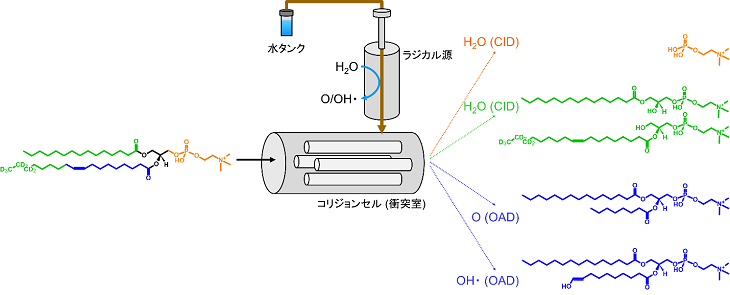2025-05-13 東京大学

図1:高温リキッドマーブルの安定性と付着
リキッドマーブルは、微細な疎水性粒子で覆われた液滴です(A)。高温のリキッドマーブルをより低温の表面上に置くと、親水性表面上では破裂する場合があります(B)。また、表面との間を隔てる空気層内に液体ブリッジが形成されることで、摩擦が増加することもあります(C)。
<関連情報>
- https://www.t.u-tokyo.ac.jp/press/pr2025-05-13-001
- https://www.t.u-tokyo.ac.jp/hubfs/press-release/2025/0513/001/text.pdf
- https://www.pnas.org/doi/10.1073/pnas.2500619122
ホットリキッドマーブル Hot liquid marbles
Pritam Kumar Roy, Yui Takai, Rui Matsubara, +1 , and Timothée Mouterde
Proceedings of the National Academy of Sciences Published: May 13, 2025
DOI:https://doi.org/10.1073/pnas.2500619122
Significance
Droplets coated with hydrophobic particles, known as liquid marbles, exhibit ultralow friction as an air layer separates liquid from solid. This enables manipulation of small liquid volumes without losses, with applications in biomedical analysis, digital microfluidics, and chemistry. Yet, their capacity to carry hot liquids remains unexplored. This research examines the stability and static friction of hot liquid marbles placed on cooler substrates. We show that on hydrophilic surfaces, temperature differences cause rupture due to condensation bridging the core liquid with the substrate, while on hydrophobic surfaces, bridging increases static friction, shifting its nature from solid to liquid. Our model provides strategies to prevent rupture and friction, with larger particles, lower liquid volatility, or superhydrophobic substrates, broadening liquid marbles’ potential.
Abstract
In the insect realm, liquids become traps due to capillary and viscous forces dominant at their scale. Yet, aphids handle the highly viscous honeydew droplets they secrete by coating them with hydrophobic wax powder which maintains an air layer between their body and the liquid. These coated droplets, known as liquid marbles, exhibit low friction and high mobility, enabling manipulation of small liquid volumes which is useful for biomedical analysis where sample volumes are limited, chemistry to reduce chemical waste, or digital microfluidics for large-scale cell culturing and drug testing. For such applications—including exothermic reactions or biological studies typically conducted above room temperature—the ability to carry hot liquid is important but remains unexplored. This article investigates the stability and static friction of hot liquid marbles placed on a substrate cooler by ∆T. We show that for large ∆T, the core liquid evaporates and condenses within the air layer below the marbles creating liquid bridges resulting in marble rupture on hydrophilic substrates and increased static friction on hydrophobic ones. The temperature difference modifies the nature of static friction: solid friction dominates at small ∆T, while at larger ∆T, it is replaced by a liquid pinning force caused by the increased liquid bridge density resulting from condensation. Finally, our study provides ways to avoid the rupture and increased static friction of hot liquid marbles due to the bridge formation by increasing the particle size, decreasing the liquid volatility, or using nanostructured superhydrophobic substrates.



